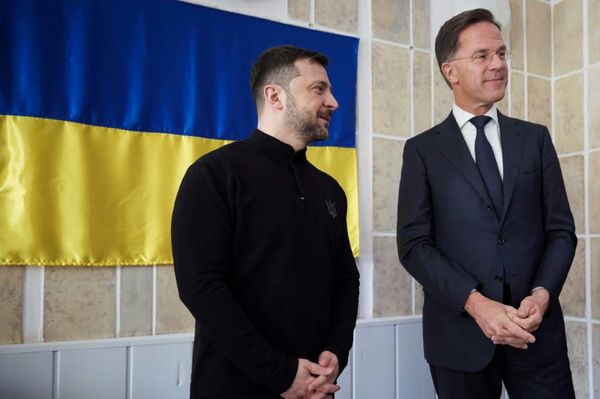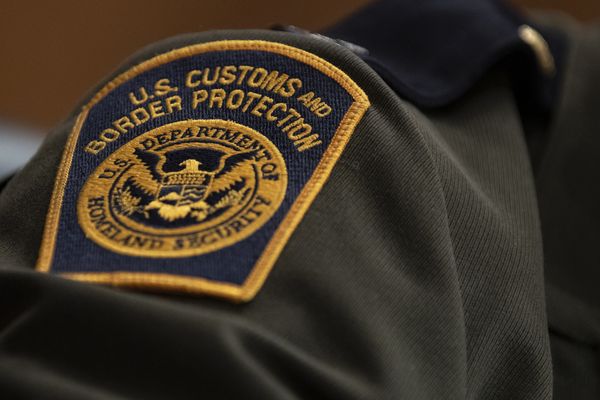
For months, relying on a train to go anywhere in Sydney has felt unwise, with lines shut and services routinely cancelled, delayed or running slower due to varying and sporadic industrial action – often with little or no notice.
Work stoppages have been deployed by a handful of rail unions who have been locked in negotiations with the New South Wales government for nine months, since their last pay deal expired in May 2024.
In mid-February, the government and combined rail unions were about to finally strike a new agreement – but after a last-minute hiccup talks collapsed and network-wide chaos ensued.
On Wednesday the dispute returns to the Fair Work Commission – here is what you need to know.
What has happened so far?
The NSW government and combined rail unions have failed to reach a new pay deal for about 13,000 rail workers since their last agreement lapsed.
Actions have included strikes – at times across the entire Sydney network – and work stoppages involving speed reductions that have led to delays. Such actions have also been threatened, then abandoned or avoided due to last-minute government deals or legal interventions.
Late in 2024 the government ceded to a key union demand to run 24-hour train services – a union bargaining chip that would lead to more work for staff as well as higher operating costs for the government.As a result workers did not follow through on a threat to walk off the job entirely for several days.
The commission has heard several applications to quash specific planned work stoppages. The government made a legal push to stop unions threatening reduced services over New Year’s Eve, a plan the unions ultimately agreed to drop.
Unionised train workers have voted, and have legal protection, to take hundreds of various industrial actions but, after a run of government legal challenges against prominent actions, unions are now taking action without announcing it.
Several times now, Sydneysiders have woken to cascading train cancellations and delays effectively shuttering the city during peak hours.
Is the Sydney Metro affected?
No. The Sydney Metro is a privately operated line (soon to be network, as other lines open), so is not part of the pay dispute between Sydney Trains – a public service employer – and the state government.
Sydney Metro trains are driverless, a fact some in the transport industry increasingly see as a positive, as months of industrial action on the rail network continue.
Union strength, especially the Rail Tram and Bus Union’s – during pay bargaining but also during construction, design and modification decisions – is understood to be a factor that may sway future state governments away from extending the city’s network.
Industry observers suggest this attitude contributed to the decision for the rail line to the future Western Sydney airport to be a privately operated driverless Metro connection to the existing St Marys station – instead of extending the T1 Western line south from St Marys – meaning airport travellers have to change lines.
Why the disruptions? What do unions want?
At the core of the standoff is money.
After Chris Minns’ Labor government came to power on a promise to scrap its public sector wages cap, the combined rail unions demanded a 32% pay rise over four years, compared with the government’s starting offer of 9.5% over three years.
The government’s latest offer is understood to be a 12% rise over three years.
Six organisations make up the combined rail unions, including the RTBU, whose members include drivers and guards, and the Electrical Trades Union (ETU), whose members perform maintenance on crucial systems such as signalling across the network.
A deal seemed imminent on 12 February before talks broke down after the union raised a one-off $4,500 payment to all staff for coming to an agreement.
Rail unions said the payment was part of their last enterprise deal and claimed it should have carried over into the new one.
But the government said the unions had not raised the payment at any point during negotiations before mid-February, and that the payment should never have been assumed as it was only included in the previous deal to cover back pay.
Unions have said they would trade the $4,500 payments – estimated to cost the state an extra $60m – for an equivalent percentage increase to pay in the third year of the deal.
What does the NSW government say?
The government has called the combined rail union’s demands unaffordable.
It has also hit out at various rail unions over their work stoppages, including the lack of notice, and accused them of coordinating to cause havoc.
But the government has also faced criticism over its failure to strike a deal both with rail unions and the nurses union, despite agreeing to “generational” wage increase for police of up to 40%.
What do train workers get paid?
Union critics point out many rail network workers earn above the national median income.
According to Transport for NSW, an average Sydney Trains driver earns about $128,000 a year– factoring in common overtime and allowances – while a guard on the network earns about $115,000.
The RTBU counters that the average base salary for a Sydney Trains driver is just over $78,000. The latest data from the ABS, released in August 2024, puts median earnings at $72,592 a year.
Is the commuting chaos coming to an end?
On Wednesday the Fair Work Commission will make a decision about whether current industrial action should be suspended for a cooling-off period, amid what have become tense negotiations. But further rail disruptions appear likely.
The government has started issuing section 471 notices to workers, warning that if they engage in industrial action, their pay could be docked.
The RTBU secretary, Toby Warnes, claimed the notices have confused staff – who fear if they do go to work but take industrial actions such as speed reductions while on the job, they won’t be paid, leading them to phone in sick, or stay home without notifying their bosses.
Warnes has said that with frustrated staff making their own decisions not to work, network disruptions are difficult to predict. The government has meanwhile accused the unions of coordinating and encouraging such individual actions among members.
The NSW premier has also foreshadowed asking for commonwealth intervention, noting that the federal workplace relations minister can terminate protected industrial action if they believe it endangers welfare or the economy – a move understood to never havebeen made before.
“[With] the amount of time that’s been focused on these negotiations, we’re at the end of the road,” Minns said on Tuesday.
On Wednesday, the prime minister, Anthony Albanese, shot down the idea of a federal intervention, telling the union “to recognise they will not have public support” if disruptions continue.
Hearings into the dispute meanwhile continue before the commission, with the state government continuing its efforts to quash certain actions legally – with a focus on quashing industrial action during negotiations, as opposed to forcing through an agreement.
If the two sides cannot reach an agreement, the matter will not be able to be settled through arbitration at the commission until September – and the threat of industrial action and disruptions could loom over Sydney for months.







